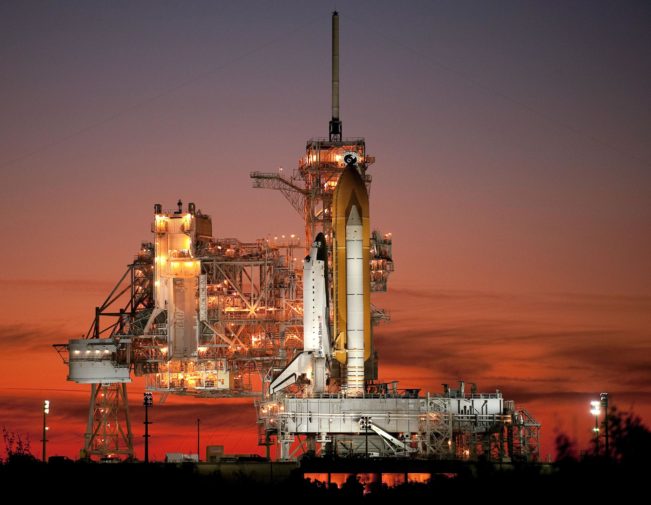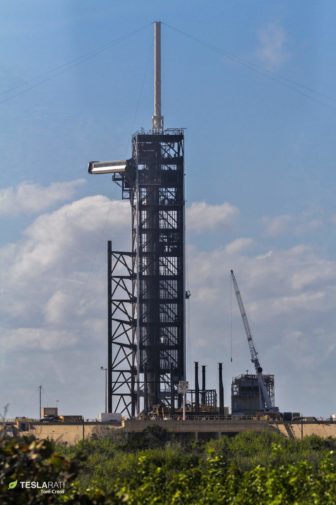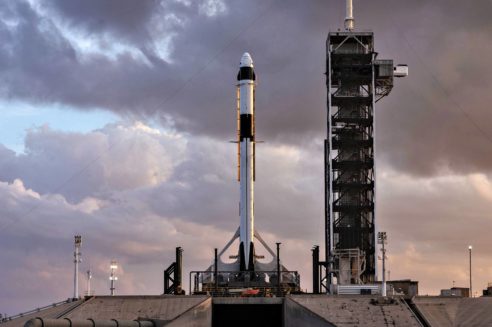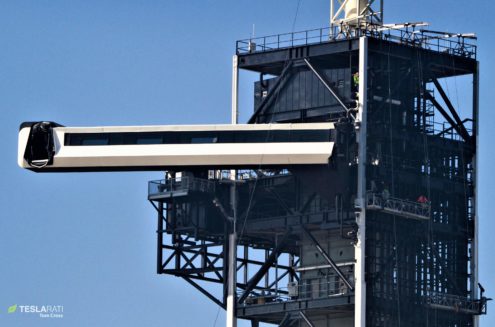NASA has confirmed that a Feb. 27th launch readiness review (LRR) prior to the orbital debut of SpaceX’s Crew Dragon spacecraft concluded with all parties remaining “go” for the historic launch.
Scheduled to liftoff at 2:48 am EST (07:48 UTC) on March 2nd, Falcon 9 and Crew Dragon can now begin to roll out to Launch Complex 39A (‘Pad 39A’) and complete final preflight checks approximately 24-48 hours before launch. After relentless work over the last few months, SpaceX has also largely completed a significant series of changes – many aesthetic – to Pad 39A, giving the historic complex a sleek new black and white paint scheme and enclosed tower (FSS).
And there's the confirmation the LRR was completed and with a GO. Rollout is next. Expect lots of cool photos especially with the 39A FSS now fully "cladded" compared to the photo in the tweet during the Static Fire test. https://t.co/SQHcd3Ahgo
— Chris B – NSF (@NASASpaceflight) February 28, 2019
Falcon 9, Crew Dragon “go” for launch
Following up the Flight Readiness Review (FRR) five days later, the completion of the Launch Readiness Review (LRR) effectively means that SpaceX can now proceed into launch operations a bit like any other mission, rolling the rocket and spacecraft out to Pad 39A, taking the assembly vertical, and finally completing (relatively) routine preflight preparations. SpaceX pad engineers and technicians have already completed a wet dress rehearsal (WDR) and static fire test over the last two months, meaning that they have already gained a significant amount of real-world experience working with and operating the brand new Crew Dragon spacecraft and its human-rated Falcon 9 rocket.
This milestone has been the better part of a decade in the making, beginning in 2009 or 2010 (depending on definitions) with funding from NASA dedicated to what would ultimately become the Commercial Crew Program (CCP). SpaceX did not begin to receive rewards or dedicated Crew Dragon-related funding until April 2011, when NASA awarded the company $75M to develop the spacecraft’s proposed integral abort system, relying on a newly developed Super Draco engine. In August 2012, NASA awarded Sierra Nevada, SpaceX, and Boeing several hundred million dollars each to continue serious development of their respective crewed spacecraft and launch vehicles, followed in 2014 by firm long-term contracts with SpaceX and Boeing to bring their Crew Dragon and Starliner vehicles to fruition.
Of note, SpaceX’s contract was valued at $2.6B, while Boeing received $4.2B, a full 60% more to complete an effectively identical task. Sadly, the US Congress systematically underfunded CCP during its formative years, largely a consequence of entrenched political and financial interests in preferentially funding NASA’s own SLS rocket and crewed Orion spacecraft above and at the cost of other rocket and spacecraft development initiatives. Insufficient funding likely contributed heavily to the years of delays subsequently suffered by the program and its commercial providers, pushing a nominal launch debut target from 2015 to 2017 before ultimately moving to 2018 and finally 2019, largely a result of unsurprising technical challenges faced by each provider as they entered into hardware- and testing-rich phases of development.
After approximately 5-6 years of concerted work, SpaceX and NASA are now as ready as they’ll ever be to conduct the first orbital launch of the Commercial Crew Program, to be followed as early as by Boeing’s own uncrewed orbital demonstration of its Starliner spacecraft. For those that have followed CCP for even part of its years-long saga, it’s more than a little surreal to be faced with the reality that such a milestone is barely two days distant.
Pad 39A: more than just a fresh coat
Meanwhile, SpaceX’s leased Pad 39A launch complex has undergone its own significant changes. Dating back to NASA’s Apollo Program, Pad 39A supported all but one of Saturn V’s 13 launches and more than 80 Space Shuttle launches before SpaceX took over the pad in 2014. In the five years the company has leased the facility, a range of changes have been made to the pad’s hardware, support facilities, and the primary metalwork known as service structures, one fixed (FSS) and one rolling (RSS). Aside from a bare skeleton of the RSS hinge, SpaceX has completely removed several hundred tons of Shuttle support hardware, while the FSS (the skyscraper-like rectangular tower) has remained largely unchanged, aside from the installation of a new level and Crew Dragon’s Crew Access Arm (CAA) on the ~110m (350 ft) tower.
Most recently, the company has pursued a series of visually distinct changes to tower, painting it almost entirely black with white highlights and installing partially transparent black plexiglass panels along the full length of at least 2-3 of its four walls. While the paint color is almost certainly aesthetically motivated (it matches Falcon 9, Crew Dragon, and the access arm), the decision to enclose all or most of the FSS will likely be very well received the astronauts and technicians it will ultimately support, especially if SpaceX manages to keep out Florida’s notorious mosquitoes.
If SpaceX’s uncrewed DM-1 Crew Dragon demonstration is a success, the company could follow it up with Crew Dragon’s first launch with astronauts aboard as early as July 2019, officially returning 39A to active place in human spaceflight and marking the end of more than eight years spent without a domestic solution for transporting US astronauts into orbit.
Check out Teslarati’s newsletters for prompt updates, on-the-ground perspectives, and unique glimpses of SpaceX’s rocket launch and recovery processes!

Bagikan Berita Ini


















0 Response to "SpaceX’s Crew Dragon and Falcon 9 head to Pad 39A for historic launch debut - Teslarati"
Post a Comment